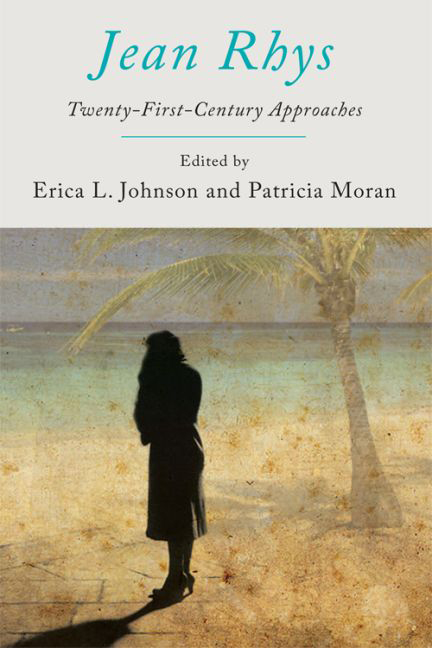Book contents
- Frontmatter
- Contents
- List of Figures
- Acknowledgements
- Notes on Contributors
- Introduction: The Haunting of Jean Rhys
- PART I Rhys and Modernist Aesthetics
- PART II Postcolonial Rhys
- 4 Jean Rhys's Environmental Language: Oppositions, Dialogues and Silences
- 5 Caribbean Formations in the Rhysian Corpus
- 6 ‘From Black to Red’: Jean Rhys's Use of Dress in Wide Sargasso Sea
- 7 The Discourses of Jean Rhys: Resistance, Ambivalence and Creole Indeterminacy
- PART III Affective Rhys
- Bibliography
- Index
7 - The Discourses of Jean Rhys: Resistance, Ambivalence and Creole Indeterminacy
from PART II - Postcolonial Rhys
Published online by Cambridge University Press: 12 September 2017
- Frontmatter
- Contents
- List of Figures
- Acknowledgements
- Notes on Contributors
- Introduction: The Haunting of Jean Rhys
- PART I Rhys and Modernist Aesthetics
- PART II Postcolonial Rhys
- 4 Jean Rhys's Environmental Language: Oppositions, Dialogues and Silences
- 5 Caribbean Formations in the Rhysian Corpus
- 6 ‘From Black to Red’: Jean Rhys's Use of Dress in Wide Sargasso Sea
- 7 The Discourses of Jean Rhys: Resistance, Ambivalence and Creole Indeterminacy
- PART III Affective Rhys
- Bibliography
- Index
Summary
Jean Rhys (1890–1979) was born a Creole named Ella Gwendolen Rees Williams, daughter of a Welsh doctor; her mother, Minna Williams, was a third-generation Dominican Creole of Scots ancestry, and she called the city of Roseau, capital of the island of Dominica, home for her first sixteen years, until her departure for England. Best known, perhaps, as the author of Wide Sargasso Sea, the ‘prequel’ to Charlotte Brontë's Jane Eyre, Rhys also authored a number of other works, including The Left Bank, Quartet, Good Morning, Midnight and Voyage in the Dark. Rhys thus spent her most formative years as a Creole in a Caribbean colony, overdetermined by many of the same cultural patterns and strictures as her black and ‘coloured’ counterparts – for Rhys, growing up ‘white’ in the Caribbean also meant being inculcated with an ineluctable ‘Caribbeanness’. It should come therefore as no surprise that Rhys frequently returns to this world of familiar doubleness, one whose contradictions continually undermined the sterile world of metropolitan whiteness to which her skin colour appeared unequivocally to condemn her.
Rhys was a white Creole, and featured white Creoles and their paradoxical subjectivities as protagonists in several of her books, including those to be read here, Wide Sargasso Sea and Voyage in the Dark. The complex depths of the creole figure in Caribbean literature and culture continue to demand further exploration, inflected as they are by the long presence and pervasive traces of colonialism in the region and its attendant corollaries of hierarchical social separation and ethnocultural difference inflected by perceptions of race. Thus the shifting and structurally unstable inscription of the creole figure echoes, in a key way, critical ambiguities of political structure and social position that shaped the colonial encounter in the region in a number of ways. The suspect beginnings of the term ‘creole’ as embodying colonialism's repulsion for the fearfully unnameable and unplaceable hybrid monstrosity, the undesired product of colonial métissage, ultimately overdetermined the ostensibly separate races of white and black, even as the boundaries and practices that presumably separated them were increasingly and unalterably blurred.
- Type
- Chapter
- Information
- Jean RhysTwenty-First-Century Approaches, pp. 146 - 168Publisher: Edinburgh University PressPrint publication year: 2015



